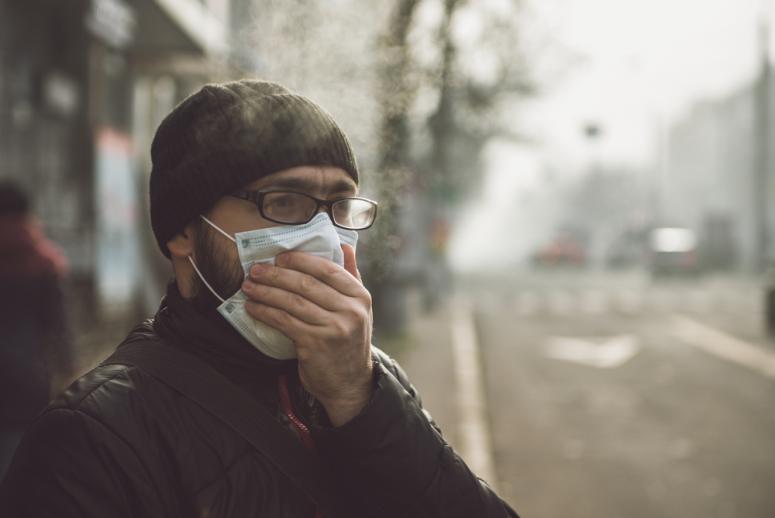
We’ve written before on the blog about climate change and health – including examining what the climate crisis and the public health crisis of COVID-19 have in common. At last month’s National Health Policy Conference and Health Datapalooza, keynote speaker Francesca Dominici highlighted another shared aspect of climate change and health – the importance of data as a foundation for informed policy decision-making.
Climate change was top of mind during the meeting as an usual and dangerously cold winter storm ravaged Texas and other large swaths of the American South. While we may naturally connect warmer weather with climate change, scientists have found that an uptick in winter storms in the U.S. is a symptom of the Artic warming up and pushing freezing air further south.
Co-Director of the Harvard Data Science Initiative, Dr. Dominici is a statistician who performs collaborative research on projects that combine big data with health policy and climate change. Her remarks highlighted the ways data can be used to provide a more accurate and realistic assessment of how policies like the Clean Air Act are working and to identify environmental risk factors for poor health outcomes.
Data to Assess Policy Impact
“Absent rigorous data, rigorous science, and rigorous process, we are really set up to implement policy on economic or political interests, and we all know that is not a good strategy,” Dr. Dominici said.
Dr. Dominici also offered examples of how better data and more thorough analysis can yield more precise learning. For example, in reviewing national air quality data between 1990 and 2015, Dr. Dominici noted a sharp decline in air pollutants. She attributed this to the 1990 amendments to the Clean Air Act many of which focused on reducing toxic pollutants and improving air quality. However, a closer look revealed that pollutants were only decreasing in geographic regions whose populations were predominantly white.
Dr. Dominici and her team discovered this disparity by harmonizing and integrating large quantities of diverse data. Using a data platform that draws from more than two dozen different government databases, she and her team were able to leverage data from Medicare and Medicaid claims, the Environmental Protection Agency (EPA), weather information from NOAA, and socioeconomics data from the Census to examine things like the link between air pollution and mortality in the Medicare population.
In a 2017 study she and her team published in the New England Journal of Medicine, data from more than 60 million Medicare beneficiaries over a 12-year time span showed that while increased air pollution led to a 7.3 percent increase in total mortality, for Black people the mortality increase was 20 percent.
“Although the air is cleaner today, there is still evidence actually of environmental disparities and evidence that those disparities are increasing,” she said. “We are not cleaning the air equally for everyone. We are mostly cleaning air for predominantly white populations.”
Data on Environmental Risk Factors for COVID Deaths
Even at the beginning of the pandemic, public health officials had noted a link between polluted air and more serious impacts of COVID-19. But preliminary work from Dr. Dominici and her team offers the first clear link between long-term exposure to pollution and COVID-19 death rates.
Dr. Dominici outlined how the team used data from multiple sources including Johns Hopkins University, Atmosphere Composition Analysis Group, U.S. Census, the Centers for Disease Control and Prevention, and more.
“One of the challenges of doing research during the pandemic is that unfortunately more deaths are coming and are occurring every day,” she said.
Despite that challenge, the team still had enough data to find that a 1 unit increase in long-term average exposure to air pollution is associated with an 11 percent increase in COVID-19 mortality rates.
These initial findings could have important implications for certain geographic regions to prepare for surges in COVID cases. For example, public health officials could use air pollution data to determine how best to distribute resources such as ventilators and respirators. The work also led to an international study that examined how air pollution contributed to risk of death from COVID-19 worldwide. That study, published in Cardiovascular Research in December 2020, found that: “In regions with strict air quality standards and relatively low levels of air pollution, such as Australia, the attributable fraction by human-made air pollution to COVID-19 mortality is found to be a few percent only. Relatively high fractions occur in parts of east Asia (∼35%), central Europe (∼25%), and eastern USA (∼25%).”
Dr. Dominci again highlighted the equity implications of the link between pollution and health risks, noting that poor neighborhoods and communities of color tend to be exposed to higher levels of air pollution than affluent, white communities.
Looking Ahead
Dr. Dominici concluded her remarks with an optimistic look at recent signals from the Biden Administration to prioritize environmental protections. She noted this was a stark contrast from the previous political climate.
“I’m really confident that data, data science, and rigorous policy will be back in the game,” she said.
Dr. Dominici’s keynote was recorded and is available to registrants of the National Health Policy Conference and Health Datapalooza in the virtual platform until May 19, 2020.